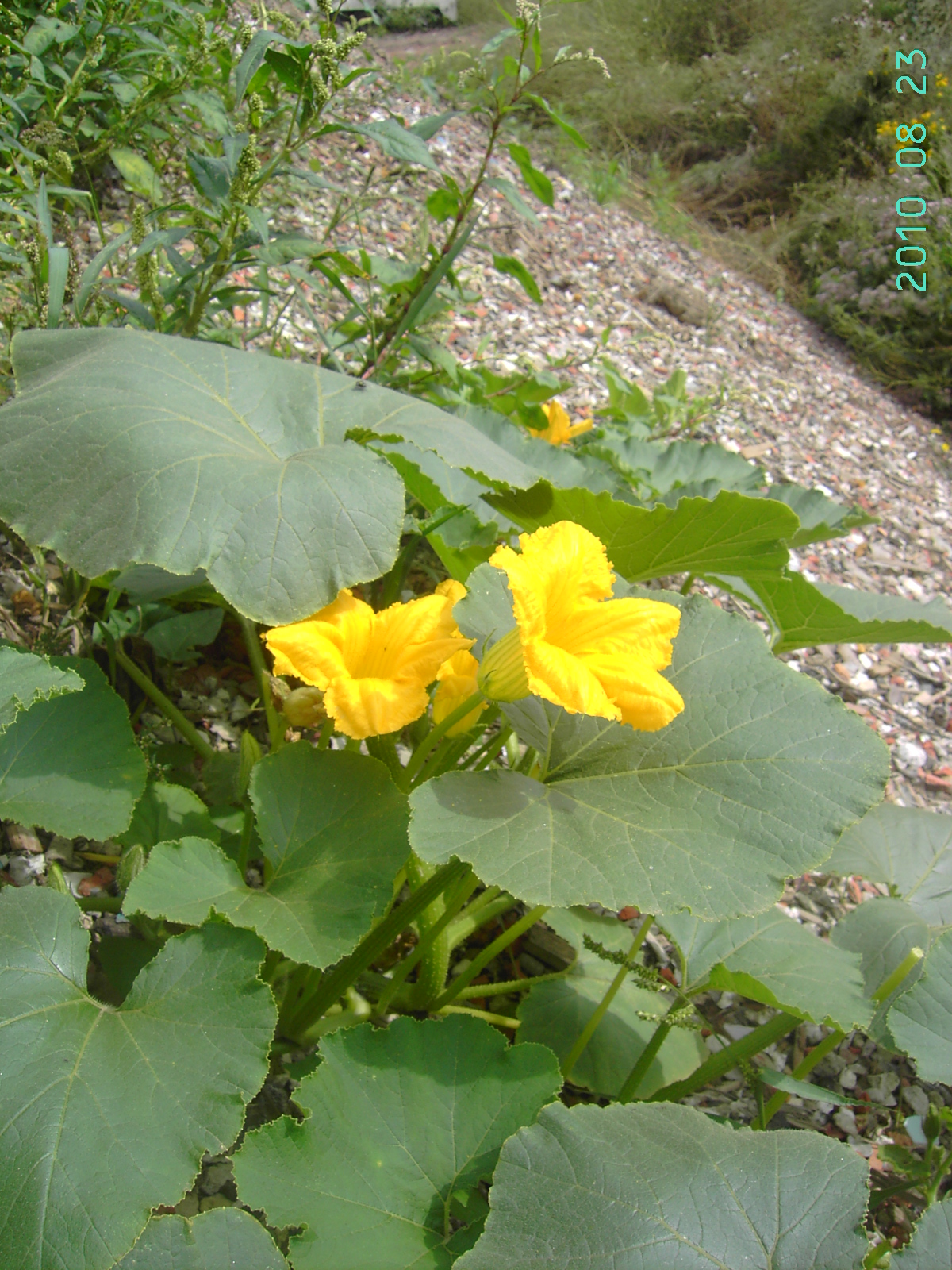Cucurbita pepo L. (S and C-Am.) – A common but always ephemeral food refuse alien. First documented in 1901 in Havelange and nowadays seen every year. Most records are from rubbish dumps. Sometimes it is seen on river banks as well.
Cucurbita pepo is by far the most common Cucurbitaceae species on dumps. It is the northernmost representative of the genus and easily produces fruit in western Europe. However, a future naturalization is rather unlikely.
Two distinct forms (only distinguishable in fruit) are encountered on dumps: ornamental gourds with fruits that are extremely variable in colour, size and shape and vegetable marrow with cylindrical or globose fruits.
According to Nesom (2011) Cucurbita pepo should be divided in two species, C. pepo s.str. and C. melopepo L. Ornamental gourds probably belong to the latter.
Cucurbita maxima is poorly understood and may have been overlooked. It has pedicels that, in fruit, are terete and corky and its leaves are unlobed and soft to the touch. Karlsson (2010) adds another feature that, however, requires confirmation: in C. maxima corollas are salver-shaped (with a distinct, strongly widened limb) with broadly oblong, obtuse, strongly wrinkled lobes having distinctly undulate margins and inner surface almost velvety from fairly thick hairs. C. pepo, in turn, has campanulate corollas (with only slightly widened limb), with 2.5–3.5 cm long, triangular, acute. slightly wrinkled lobes having fairly flat margins with inner surfaces fairly sparsely hairy from thin hairs and outer surfaces densely and softly puberulent. In Belgium plants with typical fruits and leaves of C. pepo seem to vary in flower characters, ranging from obtuse corolla lobes with wrinkled margins to acute lobes with straight margins.
 |
 |
 |
 |
 |
 |

Selected literature:
Decker DS. (1988) Origin(s), evolution and systematics of Cucurbita pepo (Cucurbitaceae). Econ. Bot. 42(1): 4-15.
Decker Walters D.S., Staub J.E., Chung S.M., Nakata E. & Quemada H.D. (2002) Diversity in free-living populations of Cucurbita pepo (Cucurbitaceae) as assessed by random amplified polymorphic DNA. Syst. Bot. 27(1): 19-28.
Karlsson T. (2010) Cucurbitaceae. In: Jonsell B. (ed.), Flora Nordica, vol. 6: 70-78. The Swedish Museum of Natural History, Stockholm.
Nesom G. (2011) Towards consistency of taxonomic rank in wild/domesticated Cucurbitaceae. Phytoneuron 2011-13: 1-33. [available online at: http://www.phytoneuron.net/PhytoN-CucurbConsistency.pdf]
Paris H.S. (1986) A proposed subspecific classification for Cucurbita pepo. Phytologia 61(3): 133-138.
Paris H.S. (2000) Paintings (1769-1774) by A. N. Duchesne and the history of Cucurbita pepo. Ann. Bot. (UK) 85(6): 815-830.
Teppner H. (2000) Cucurbita pepo (Cucurbitaceae): history, seed coat types, thin coated seeds and their genetics. Phyton (Austria) 40(1): 1-42.

